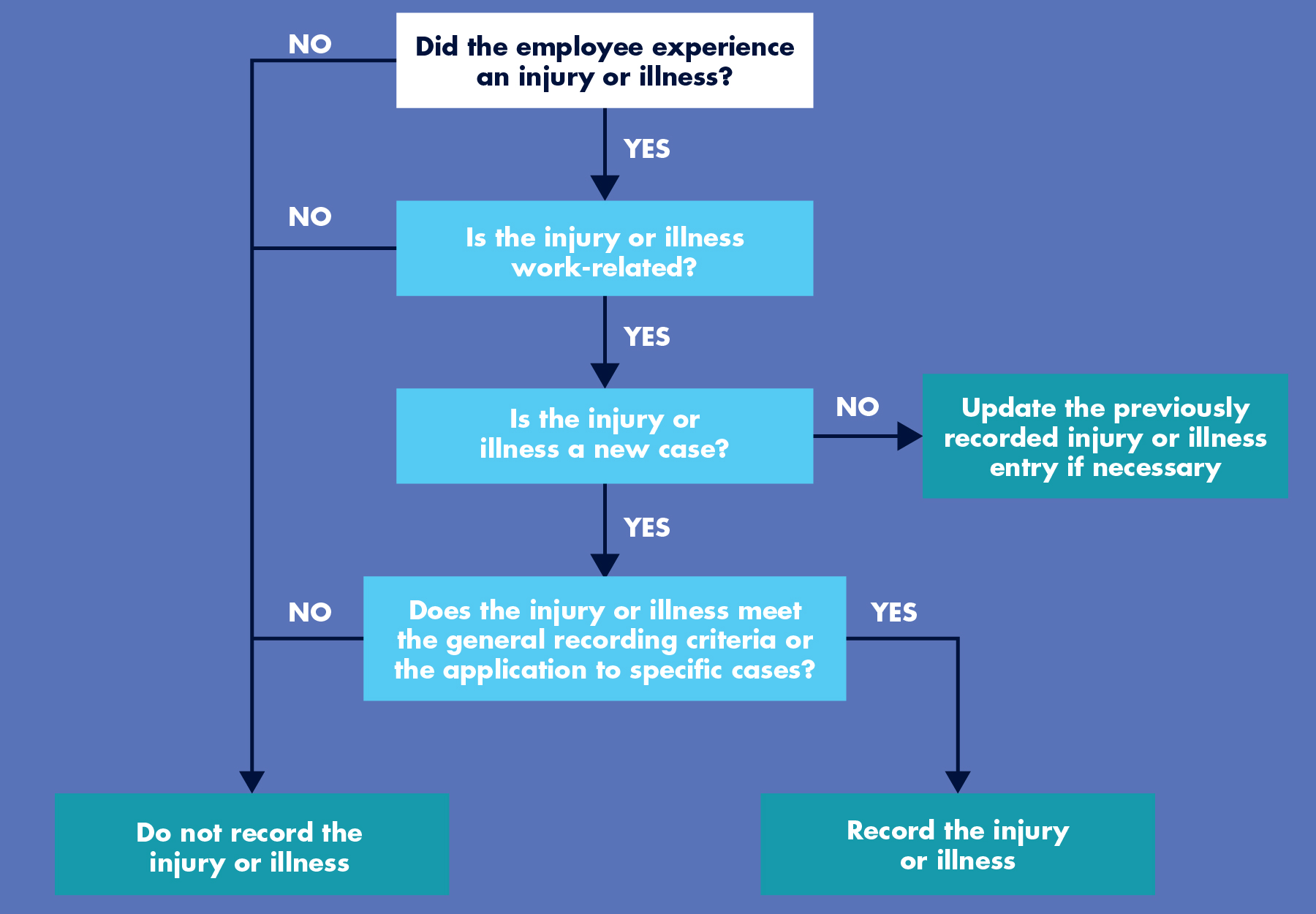Top 10 OSHA 300 Form Bad Ideas to Avoid
How to steer clear of assumptions commonly made by employers that can lead to citations under SEC. 1904.32 of the OSHA recordkeeping standard.

It’s that time of the year again: Occupational Safety and Health Administration (OSHA) recordkeeping season. As you review your 2022 OSHA 300 logs and start the process of preparing, certifying, and posting your lab’s OSHA 300A Annual Summary, be sure you understand the OSHA rules and steer clear of certain bad ideas and assumptions commonly made by employers that can lead to citations under Sec. 1904.32 of the OSHA Recordkeeping standard.1
Bad Idea 1: We Should Record Every Injury & Illness, Just to Be Safe
Truth: Although underreporting can lead to citations, overreporting can also get you into trouble because it inflates your illness and injury rates. In addition to higher workers’ comp premiums, artificially bloated injury rates may make you a target for what’s called Site-Specific Targeting (SST) and other OSHA enforcement programs targeting employers with injury rates above the norms for their industry.2
What to Do: Erring on the side of caution is all well and good. But make sure you record only illnesses and injuries that meet the OSHA criteria, i.e., the ones that: (i) Meet OSHA criteria for “work-related”; (ii) Constitute new cases that you haven’t already reported; and (iii) Result in at least one of the following:
-
- Death;
-
- Days away from work;
-
- Restricted work or transfer to another job;
-
- Medical treatment beyond first aid;
-
- Loss of consciousness; or
-
- Significant injury or illness diagnosed by a physician or licensed healthcare professional.
Bad Idea 2. Not Recording Illnesses/Injuries Because They’re Not Your Fault
Truth: As OSHA clarifies in an Interpretation Letter, recordability in the OSHA 300 is no-fault.3 So, illnesses/injuries may still be recordable even if they’re sustained in bizarre accidents, result from deliberate misconduct on the part of an employee, or are otherwise “not your fault.”
What to Do: Don’t consider blame or responsibility in evaluating recordability. Record all illnesses and injuries that meet the OSHA criteria listed under Bad Idea 1 above. Here’s a decision tree contained in the actual OSHA standard that you can use to determine if injuries/illnesses are recordable.4

Bad Idea 3. Not Recording Illnesses/Injuries Unless They’re Covered by Workers’ Comp
Truth: In some circumstances, it may be okay to use state workers’ comp injury/illness reporting forms instead of the OSHA 300. But recognize that the standards for reportable and recordable injuries under workers’ comp aren’t necessarily the same as for OSHA and that in listing recordable illnesses/injuries on the form, you must apply the OSHA recordability criteria.
What to Do: Make sure you record injuries and illnesses that meet the criteria for recording under OSHA even if you’re using the workers’ comp form as a substitute for the OSHA 300 log and the particular injury or illness isn’t covered by workers’ comp. In other words, if you must record it in the OSHA 300, you also have to record it on the equivalent form, regardless of whether it’s compensable under workers’ comp.
Bad Idea 4. Not Recording Illnesses/Injuries Because the Victim Is a Temp
Truth: Temps are considered “covered employees” for whom illness/injury records must be kept under Sec. 1904.31 of the recordkeeping regulation.5 The issue is whether responsibility for the temp’s injury/illness falls to the host employer or the temp agency that placed the temp at the site.
What to Do: Make sure you record covered illnesses/injuries suffered by temps to the extent you supervise the work they do on a day-to-day basis. As OSHA explains in an Interpretation Letter, supervision means control over the “details, means, methods, and processes by which” work is carried out.”6
Bad Idea 5. Not Recording Aggravation to a Non-Work Injury/Illness that a Doctor Describes as Non-Work-Related
Truth: Aggravation at work of a non-work injury/illness is recordable if the aggravation at work is “significant.” But in the real world, problems can arise because of the disconnect between doctors and OSHA officials on what the term “work-related” means. To a doctor, an injury primarily caused by something outside of work may not be “work-related” just because it gets tweaked at work. But for OSHA, such tweaking would be deemed “significant” enough to make the aggravation work-related, if it occurs as a result of a discrete work event.
What to Do: When asking doctors for an opinion on the work-relatedness of aggravations of non-work injuries/illnesses, make sure they’re considering the issue on the basis of the OSHA definition of work-relatedness, rather than on the basis of common sense, medical terminology, or workers’ comp standards.
Bad Idea 6. Assuming a Treatment Advertised as “First Aid” Must Also Be First Aid under OSHA
Truth: Under Sec. 1904.7(b)(1)(iv), injuries/illnesses are recordable if the victim gets medical treatment “beyond first aid.”7Sec. 1904.7(b)(5) lists the specific treatments defined as “first aid” under the standard:7
| First Aid Treatments Under OSHA Recordkeeping Rules
· Using a non-prescription medication at non-prescription strength (for medications available in both prescription and non-prescription form, a recommendation by a physician or other licensed healthcare professional to use a non-prescription medication at prescription strength is considered medical treatment for recordkeeping purposes); |
What to Do: Be aware that the above treatments aren’t just examples; they’re the entire list of what OSHA deems “first aid.” Also be aware that treatments advertised as “first aid” aren’t actually included on the Sec. 1904.7(b)(5) list, e.g., removal of foreign objects from eyes with instruments called eye loops and magnets. So, rely not on the advertisement, but the (b)(5) list to determine if a treatment is deemed “first aid” under OSHA.
Bad Idea 7. Assuming Injuries Aren’t Recordable as a Work Restriction If the Employee Can Still Do Useful Work
Truth: You must record injuries/illnesses that result in a “work restriction,” i.e. (under Sec. 1904(b)(7)(i) and (ii)), where the employer keeps from performing or a licensed healthcare professional recommends that the employee not perform one or more of the “routine functions” of their job. “Routine function” is a work activity regularly performed at least once a week.7
What to Do: Understand that work restrictions aren’t defined by the usefulness of the injured employee’s post-injury work, but how it compares to their pre-injury job functions. So, for example, assigning office work to a warehouse employee who can no longer lift materials as they did every day before they got hurt won’t get you out of recording the injury as a work restriction.
Bad Idea 8. Assuming Light Duty Doesn’t Count as a Work Restriction
Truth: As explained above, you must record injuries/illnesses that result in a “work restriction,” i.e. (under Sec. 1904(b)(7)(i) and (ii)), where the employer keeps from performing or a licensed healthcare professional recommends that the employee not perform one or more of the “routine functions” of their job. “Routine function” is a work activity regularly performed at least once a week.7 Under Sec. 1904(b)(4)(vii), light duty not only can be but is presumed to be a work restriction that must be recorded.7
What to Do: If a doctor recommends light duty, treat the case as a work restriction ,unless you can get the doctor to expressly state that the employee can perform all their routine job functions. Or, if you’re not clear exactly what the doctor is recommending, you may follow up and ask what the restriction means.
The best approach: Ask the doctor directly what, if any, of the employee’s routine tasks they shouldn’t perform. Treat the injury as a recordable restricted work case if:
-
- At least one of the employee’s routine job functions is on the list; or
-
- You can’t get specific information from the doctor on the routine tasks the employee can’t perform.
Bad Idea 9. Counting the Day the Employee Got Hurt as a Restricted Work/Lost Day
Truth: Lost/restricted work days are counted from the day after the employee gets hurt.
What to Do: When an employee suffers a work-related injury leading to lost or restricted work, start the count of lost/restricted days on the day following the injury. Exception: If an employee is placed on restrictions or lost days for the first time several days after the injury occurs, start the count with the day the orders were written.
Bad Idea 10. Not Counting Company Shutdown Days as Lost/Restricted Work Days
Truth: Those days do count. The OSHA rules for counting restricted/lost work days make no exception for days a company is shut down.
What to Do: Be sure to count shutdown days toward the employee’s lost/restricted work day total.
References:
Subscribe to view Essential
Start a Free Trial for immediate access to this article